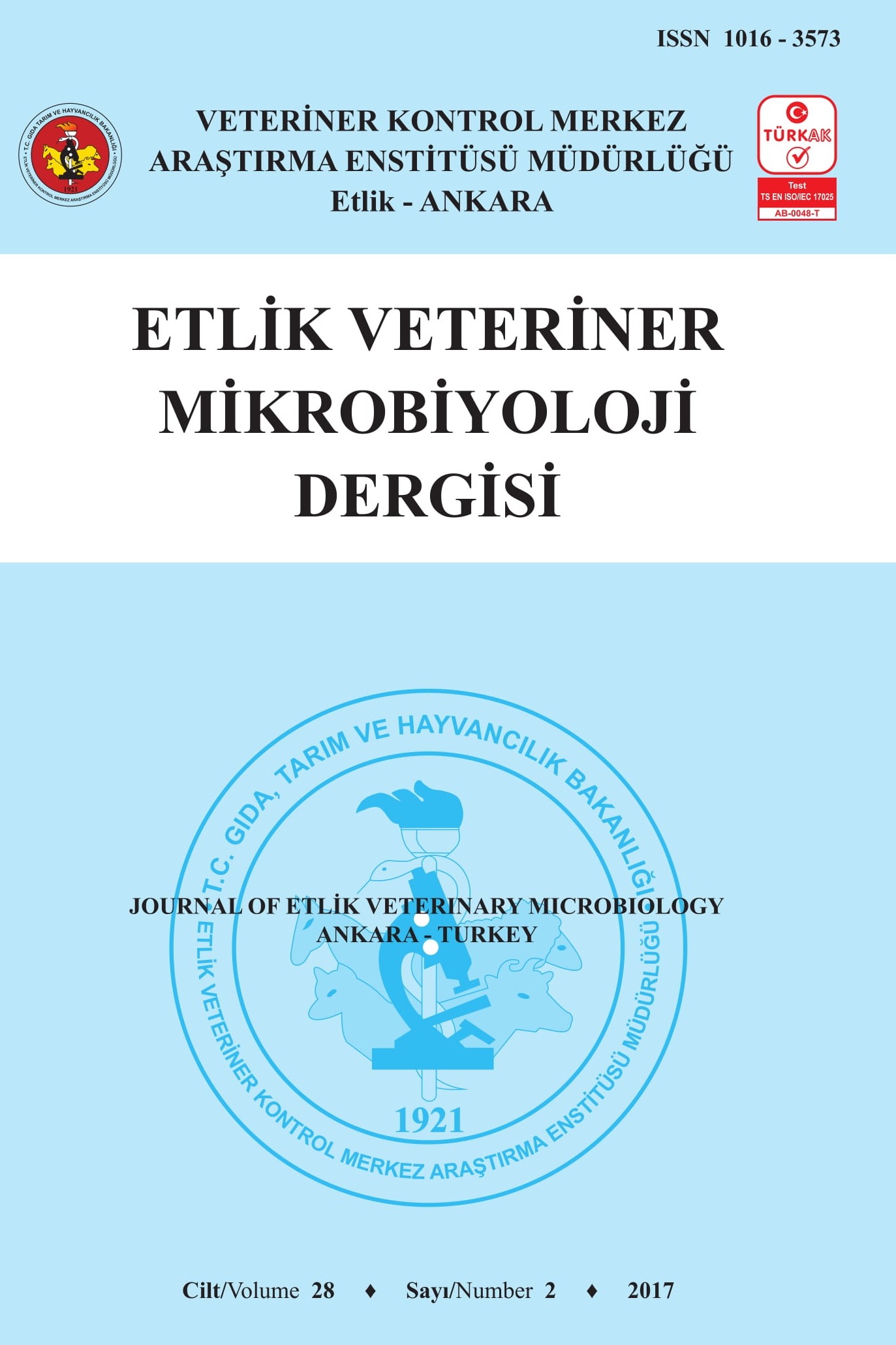
Etlik Veteriner Mikrobiyoloji Dergisi
Yazarlar: Armağan Erdem ÜTÜK ÜTÜK, Bünyamin AKIN
Konular:Veteriner Hekimlik
DOI:10.35864/evmd.797723
Anahtar Kelimeler:C-ELISA,Dog,Neospora caninum,Osmaniye
Özet: Neospora caninum is a parasitic protozoon in the phylum Apicomplexa. The definitive hosts of the agent are carnivores in the family canidae and intermediate hosts are mainly cattle and farm animals such as sheep, goats, buffalo and horses. The disease is usually asymptomatic in dogs. Clinical neosporosis usually occurs at different levels in very young, very old, and immunocompromised dogs. Neuromusculer disorders, multifocal systemic spread and dermal symptoms can be observed in infected animals. N.caninum causes abortion, stillbirth, fetal deaths and consequently serious economic losses in some intermediate hosts, particularly in cattle. In cattle breeding, the annual economic loss caused by Neosporosis is estimated to be US$ 1.298 billion globally and US$ 40.5 million in Turkey. The most important definitive host of the agent is dog in the domestic cycle of the disease. The purpose of this study was to determine the exposure status of the dogs to N.caninum in Osmaniye region. For this, blood samples were taken from 105 dogs (71 males and 34 females) from different districts of Osmaniye, and tested with c-ELISA method against N.caninum antibodies. The average seroprevalence of the agent was determined as 35.23% (37/105). As a result of statistical analysis, it was determined that the relationship between N.caninum seroprevalence and race, gender and age was insignificant (p˃0.05). With this study, the exposure status of dogs to the N.caninum was revealed for the first time in Osmaniye region.